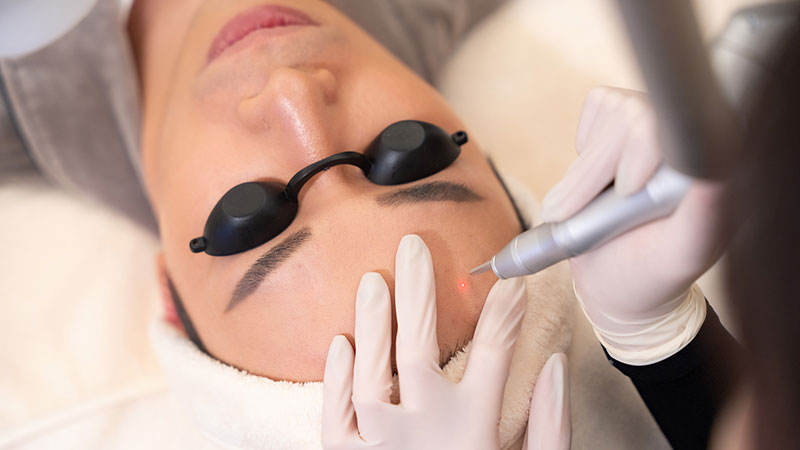In the sophisticated domain of laser technology, the carbon dioxide fractional laser has become a prominent player, especially in the field of skin treatment.
At the core of the carbon dioxide fractional laser’s functionality lies the principle of fractional photothermolysis. This concept is the cornerstone of its efficacy and sets it apart from traditional laser treatments. When the device is activated, it emits an array of microscopically fine light beams. These beams are precisely arranged in a specific pattern, which is crucial for the desired therapeutic outcome.
Upon contact with the skin, these beams penetrate to the dermal layer. Here, they interact with the skin’s components in a highly controlled manner. The primary target of the laser’s energy is water, which is abundantly present in the skin and serves as the main absorber of the laser light. As the water molecules within the skin absorb the energy, they undergo rapid heating.
This heating effect leads to a series of precisely orchestrated events. In the regions where the laser beams strike, the collagen fibers, which are essential for maintaining the skin’s structural integrity and elasticity, are directly affected. The heat causes the collagen fibers to contract and denature. This might seem counterintuitive, but it is, in fact, a key step in initiating the skin’s natural healing and rejuvenation processes.
The micro-lesions created by the laser beams are strategically designed to be surrounded by healthy, unaffected tissue. This surrounding tissue plays a vital role in the subsequent healing cascade. The keratinocytes in the adjacent normal tissue sense the injury and immediately initiate a repair response. They start to migrate towards the site of the micro-lesions, facilitating rapid re-epithelialization and closure of the wound.
Simultaneously, the body’s natural healing mechanisms are triggered deep within the dermis. The thermal injury caused by the laser stimulates the fibroblasts, the cells responsible for producing collagen. These fibroblasts become activated and begin to synthesize new collagen fibers. Over time, the newly formed collagen is deposited in an organized manner, gradually replacing the damaged tissue and restoring the skin’s structure.
Moreover, the controlled thermal injury also induces a remodeling process of the existing collagen and elastic fibers. This leads to an improvement in the overall texture and elasticity of the skin. The proportions of type I and type III collagen, which are crucial for maintaining healthy skin, are also adjusted to approach a more normal ratio.
In addition to its impact on collagen, the carbon dioxide fractional laser also affects other elements within the skin. It can modify the structure of pathological scar tissue. The micro-lesions and subsequent healing process break down the abnormal collagen cross-links and fibrotic tissue present in scars. This results in the softening of the scar tissue and a restoration of its elasticity, making it less prominent and more cosmetically acceptable.
The carbon dioxide fractional laser’s ability to precisely control the parameters of treatment further enhances its versatility. The diameter of the laser spots, the density of the treatment, the depth of penetration, and the energy level can all be adjusted according to the specific needs of each patient and the nature of the skin condition. This personalized approach ensures that the treatment is optimized for maximum effectiveness and minimal side effects.






Leave A Comment